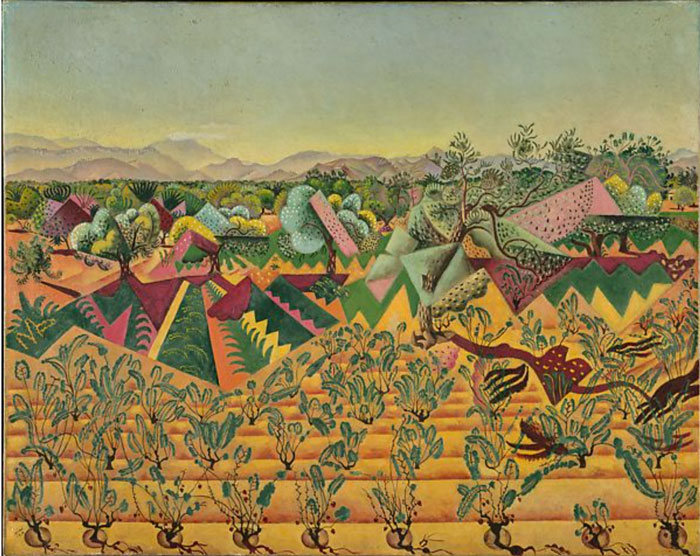Teach This Poem, though developed with a classroom in mind, can be easily adapted for remote-learning, hybrid-learning models, or in-person classes. Please see our suggestions for how to adapt this lesson for remote or blended learning. We have also noted suggestions when applicable and will continue to add to these suggestions online.

Look closely at the image of the painting Vines and Olive Trees, Tarragona by Joan Miró.
The following activities and questions are designed to help your students use their noticing skills to move through the poem and develop their thinking about its meaning with confidence, using what they’ve noticed as evidence for their interpretations. Read more about the framework upon which these activities are based.
-
Warm-up: Look closely at the image of the painting Vines and Olive Trees, Tarragona by Joan Miró. What stands out to you in the painting? Why? Look again. What else do you see?
-
Before Reading the Poem: Watch the video of the song “Siete Lágrimas” by Lau Noah. What do you notice about the song? What lyrics or sounds stand out to you in the song?
-
Reading the Poem: Now, read the poem “Arbolé, Arbolé . . .” by Federico García Lorca silently. What do you notice about the poem? Annotate for any words or phrases that stand out to you or any questions you might have.
-
Listening to the Poem (enlist two volunteers to read the poem aloud): Listen as the poem is read aloud twice, and write down any additional words and phrases that stand out to you.
-
Small-group Discussion: Share what you noticed about the poem with a small group of students. Based on the details you just shared with your small group and the resources from the beginning of class, how do the painting and song relate to the poem? What do you make of the repetition in the poem?
-
Whole-class Discussion: How might you describe “the girl” in the poem? What makes you say that? What does this poem say about nature and/or the passing of time? What questions do you still have?
-
Extension for Grades 7-8: What might this poem look like as a painting or an illustration? Create it. Or, write a creative response for what you think happens next in the poem. Share your work with your classmates.
-
Extension for Grades 9-12: Read more of Lorca’s work. In honor of Banned Books week, read more about Federico García Lorca’s place, along with other poets, in the history of banned texts. Discuss the importance of literature and Lorca’s work with your classmates.
To celebrate National Hispanic Heritage Month from September 15 through October 15—and the rich tradition of Latinx and Spanish-language poetry all year long—browse this selection of poems by classic and contemporary poets.
